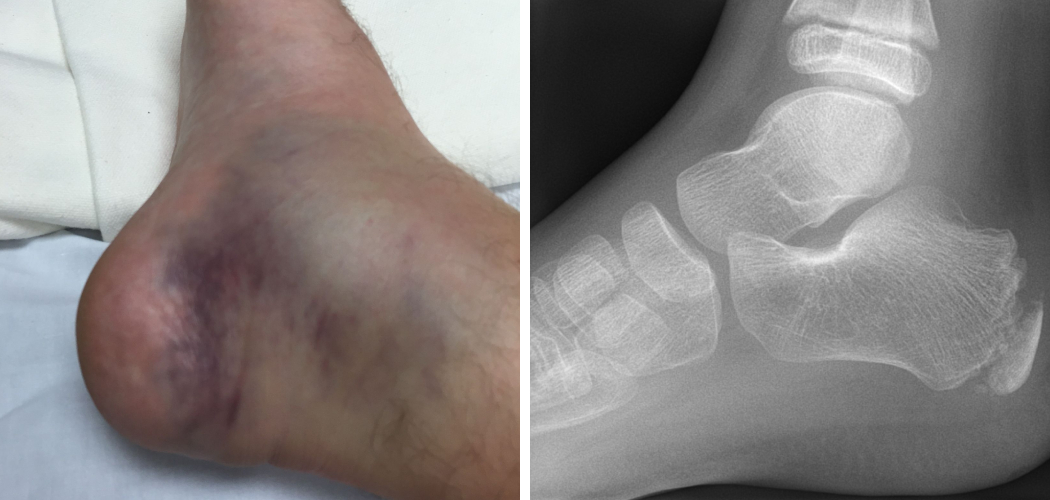What is Calcaneus Fracture?
A calcaneus fracture is a break in the heel bone. It can happen from a fall, directly impacting the heel or twisting the ankle. Surgery is often needed to fix the bone and may require a plate and screws. Recovery time can be 6-8 weeks, depending on the severity of the fracture. Life after a calcaneus fracture can be difficult, but you will be able to return to your normal activities with patience and determination. Here are some tips to help you along the way.
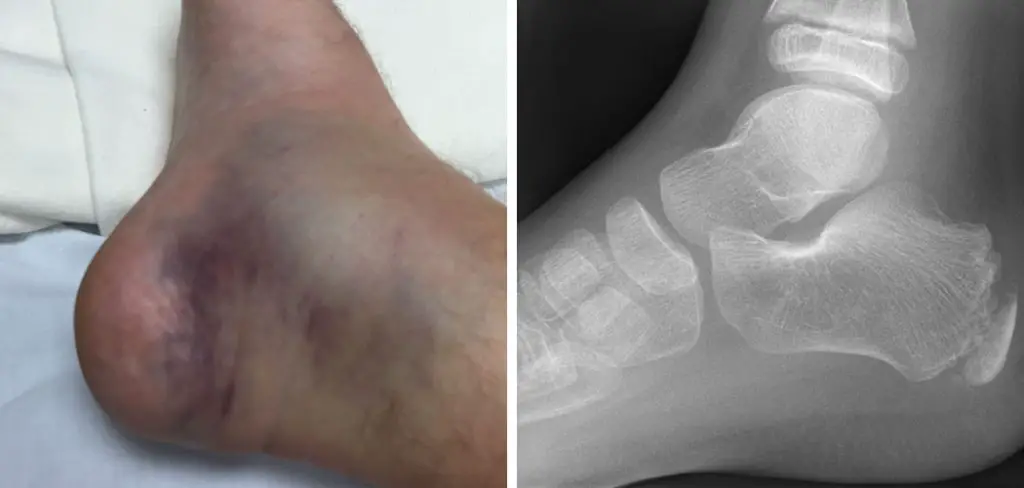
How Do Calcaneal Fractures Occur?
When most people think of fractures, they think of a bone being snapped in half. However, there are several different types of fractures, and they can all occur in different ways. For example, a calcaneal fracture is a type of break that occurs in the heel bone. It is typically caused by a high-impact force, such as a fall from a height or a car accident.
It can be difficult to heal because the relatively small heel bone has a limited blood supply. Treatment often requires surgery, and recovery can take several months. While calcaneal fractures are not always preventable, wearing proper footwear and avoiding high-risk activities can help to reduce the risk of injury.
Calcaneus Fracture Recovery Exercises
A calcaneus fracture is a break in the heel bone. It can be a very painful injury, and recovery can take several months. However, there are a few simple exercises that can help to speed up the healing process.
For example, ankle pumps can help to improve circulation and reduce swelling. Heel raises can also be beneficial, as they help to strengthen the muscles and ligaments around the injury. Additionally,range-of-motion exercises are important for maintaining flexibility and preventing stiffness.
Finally, it is also important to rest the foot as much as possible to allow the healing process to occur. By following these simple tips, you can help to ensure a speedy recovery from a calcaneus fracture.
Range of Motion for the Ankles
The first thing you will need to do is start working on the range of motion for your ankles. You will be in a cast or boot for at least six weeks, and during this time, you must keep your range of motion from getting worse. There are a few ways you can do this. The most important is to move your ankles as much as possible while in the cast or boot. This can be done by simply flexing and extending your ankle or making circular motions.
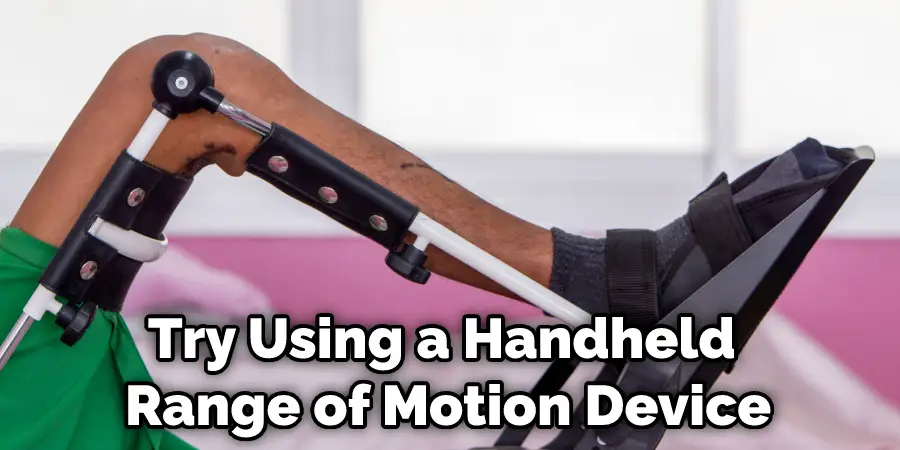
If you have trouble moving your ankle, you can also try using a handheld range of motion device. These devices have a handle that you hold onto while you move your foot up and down or in a circular motion.
Muscle Strengthening
Calcaneus fracture can result from a high-impact fall or car accident. While this type of injury can be very debilitating, several exercises can help to promote healing and recovery. One of the most effective ways to promote healing is through muscle strengthening. This helps to take the pressure off the bones and joints, allowing them to heal more effectively.
A physiotherapist can design a personalized muscle strengthening program tailored to your unique needs and goals. In addition, regular cardiovascular exercise can also help promote healing by increasing blood flow to the area.
Heel Cord Stretch
If you have recently suffered a calcaneus fracture, it is important to begin rehabilitation as soon as possible. This will help ensure that you regain the full function of your ankle and avoid further complications.
Stand with the ball of your foot on a step and your heel hanging off, keeping your leg straight, slowly lower your heel below the step level. You should feel a stretch in your Achilles tendon and calf muscle. Hold for 15 to 30 seconds, and then raise your heel back to the starting position. Repeat 2 to 4 times per day.
Calf Stretch
Stand with your feet hip-width apart and your hands on a wall at shoulder height. Step forward with your right leg and keep your left leg behind you with your heel on the ground.
Keep your right knee bent, lean forward into the wall until you feel a stretch in your calf muscle. Hold for 15 to 30 seconds, and then switch legs. Keep reading for more information about life after a calcaneus fracture.

Achilles Stretch
Sit on the ground with your legs stretched out in front of you and a towel wrapped around the ball of your right foot. Keeping your left leg straight, pull on the towel as you bend your right knee and bring your heel toward your glutes. You should feel a stretch along the back of your leg. Hold for 30 seconds and then repeat on the other side.
Heel Raises
Heel raises are an important part of your rehabilitation program. They stretch and strengthen the Achilles tendon and calf muscles, which help support your ankle.
Start by sitting on a chair with your feet flat on the floor. Slowly raise your heels until you are standing on your toes, then lower them down to the floor. Repeat this ten times. As the exercise gets easier, you can add weight to your ankles by wearing a calf-strengthening boot or holding dumbbells in your hands.
Balancing Exercise
After you have regained some motion and strength in your ankle, it is important to focus on exercises that will help improve your balance. This is especially important if you are over 60, as falling is a significant risk factor for developing a calcaneus fracture.
The following exercises can help improve your balance:
- Stand on one leg and raise the other leg off the ground. Hold this position for 30 seconds to 1 minute.
- Walk heel-to-toe in a straight line.
- Stand on an unstable surface, such as a foam pad or balance board.
- Do single-leg squats.
- Do single-leg deadlifts.
It is important to talk to your doctor or physical therapist before starting any new exercises, as they can help you modify the exercises to your specific needs and abilities.
Learning to Walk Again After Broken Heel
The journey back to walking after a broken heel is not easy. The heel is a weight-bearing bone, for starters, so it needs to be in alignment for you to walk correctly.
This means that the bones in your foot and ankle need to be properly healed before you can start bearing weight on your foot again. In addition, the muscles and tendons around your heel need to be strong enough to support your body weight.
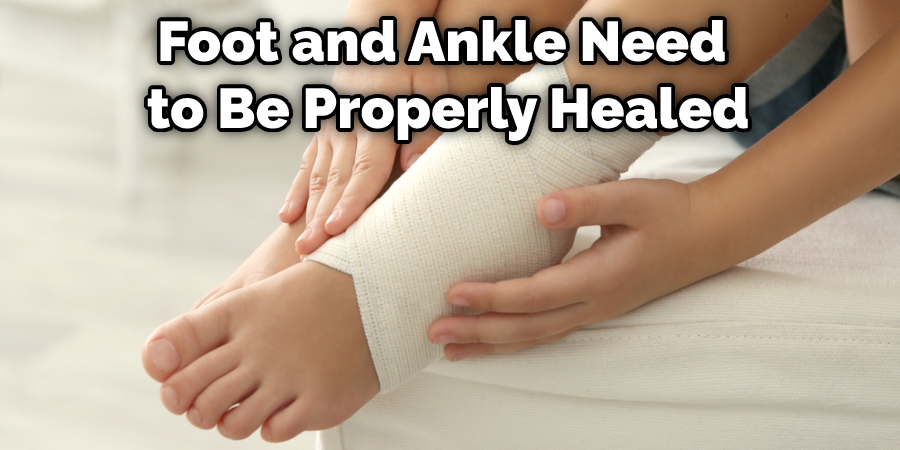
The good news is that with proper rehabilitation, most people can make a full recovery and return to their normal activities. The key is to start slowly and progress gradually as your strength and balance improve. Then, with patience and persistence, you will be able to walk again without any pain or limitations.
Early Motion
After a calcaneus fracture, getting your foot moving as soon as possible is important. This will help prevent stiffness and make it easier for you to walk once the bones have healed.
Your doctor or physiotherapist will give you exercises to do while in hospital. They may also use electrical stimulation (TENS) to help reduce swelling and pain.
Once you are discharged from the hospital, you will need to continue doing your exercises at home. You may also need to wear a special boot or splint for 6-8 weeks to keep your foot in the correct position.
Physical Therapy
After a calcaneus fracture, you will likely need to participate in a physical therapy program. The primary goals of physical therapy are to reduce pain and swelling, improve range of motion, and help you regain strength and mobility.
Your physical therapist will design a custom rehabilitation program that may include exercises, stretching, and massage. You will probably need to attend physical therapy sessions two to three times per week for several weeks.
At-Home Care
After you leave the hospital, you will most likely need crutches to walk. Your surgeon will tell you how long you should use crutches. You may also have a splint or cast on your foot and leg.
You can expect some pain and swelling. Put ice on your ankle for 20 minutes at a time, several times a day. Take pain medicine as directed by your surgeon. Elevate your leg above the level of your heart as often as you can. This will help reduce swelling. Please do not put any weight on your leg until your surgeon tells you it is okay.
Weight Bearing
Most patients can weight bear as tolerated on their calcaneus fracture. This means that you can put as much weight on your foot as you feel comfortable. It is important to start slowly, though, and gradually increase the weight you are putting on your foot. You may be able to walk without crutches or a cane after 6-8 weeks.
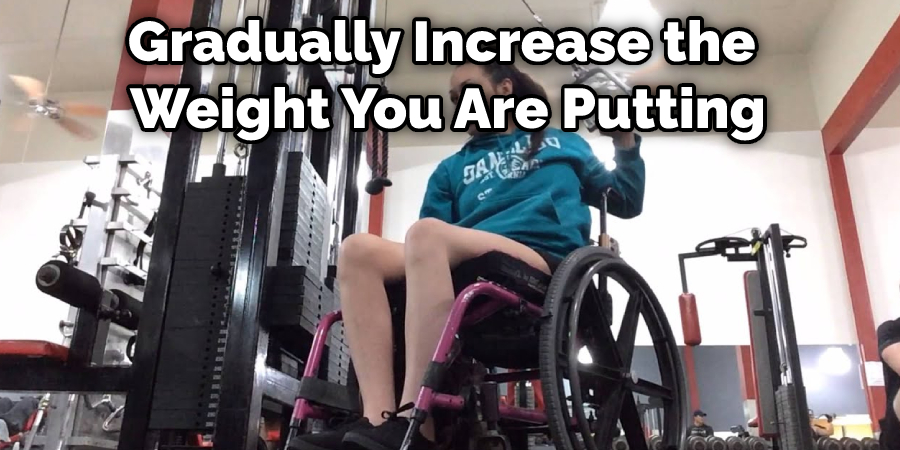
If you have difficulty weight bearing, your doctor may recommend using a CAM walker (also called a moon boot). This type of boot helps support your foot and ankle while you are healing.
Can Running After Calcaneus Fracture?
Calcaneus fracture is a break in the heel bone. It is a serious injury that can cause severe pain, swelling, and bruising. It can also lead to long-term problems such as chronic pain, joint stiffness, and difficulty walking. If you have suffered a calcaneus fracture, following your doctor’s instructions for treatment and rehabilitation is important.
In most cases, this will involve wearing a cast or splint for several weeks or months. Once the bone has healed, you will need to increase your activity level slowly. You should avoid running or high-impact activities until your doctor has given you the green light.
However, once you have been cleared for activity, gentle running may actually help to improve your healing process. Running can help increase blood flow to the area, promoting healing. Additionally, running can help to reduce swelling and improve range of motion.
Of course, you will need to take things slowly at first. Start with short walks and gradually increase your distance and speed as your body allows. If you begin to experience pain, stop and rest.
It is also important to stretch and warm up before you run and to cool down and stretch after your run. If you have any concerns about running after a calcaneus fracture, talk to your doctor.
Life After a Calcaneus Fracture (Calcaneus Fracture Recovery Stories)
A calcaneus fracture is a break in the bone that connects your ankle to your heel. This type of injury can be extremely disabling and often requires surgery to repair. While the road to recovery can be long and difficult, many people can make a full recovery and return to their previous level of activity. Here are some inspiring stories of people who have overcome a calcaneus fracture.
Bill was an avid runner training for a marathon when he suffered a calcaneus fracture. After spending several months in a cast and undergoing physical therapy, Bill slowly started running again. He eventually completed the marathon he had been training for, and he now runs several races each year.
Sue was involved in a car accident that resulted in a calcaneus fracture. After several months of rehabilitation, she could walk again without any pain. She eventually returned to her job and is now living life to the fullest.
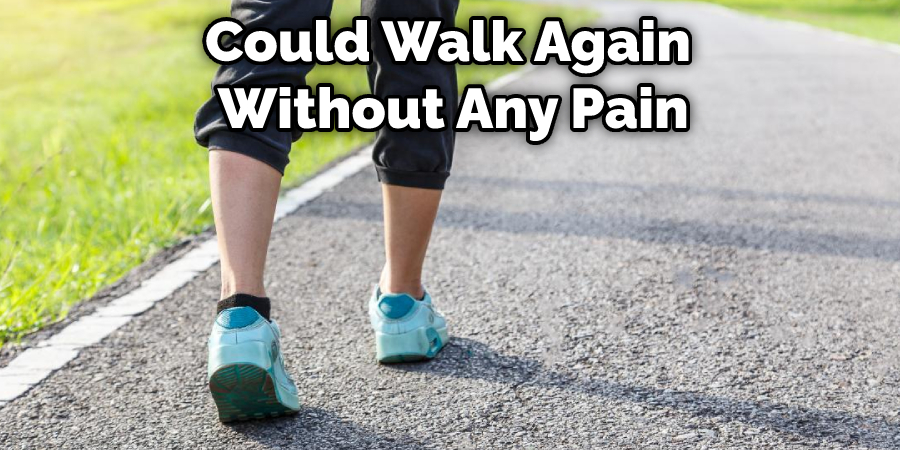
John was playing basketball when he suffered a calcaneus fracture. He underwent surgery and then spent several months in a wheelchair. With the help of physical therapy, he was eventually able to walk again. He has since returned to playing basketball and is now even better than before.
These stories show that it is possible to make a full recovery from a calcaneus fracture. Don’t give up hope if you have suffered this type of injury. With dedication and hard work, you can overcome it and get back to living your life.
How Can I Protect My Heel from Further Injury?
After you have healed from a calcaneus fracture, there are things you can do to help prevent another injury to your heel. First, wear shoes that fit well and support your foot. Be careful when you exercise or play sports. Start slowly and gradually increase the amount of time you are active. Warm-up before you exercise.
If you have any problems with your feet, talk to your doctor. You may need to wear a special shoe or boot for a while. Your doctor may also prescribe physical therapy to help you regain strength and motion in your foot and ankle. Keep reading if you want to know more about life after a calcaneus fracture.
What Is the Difference Between a Custom-Made Orthotic and A Generic One?
There are two main types of orthotics: custom-made and generic. Custom-made orthotics are made to fit the specific dimensions of your foot, while generic orthotics are mass-produced and don’t take into account the unique shape of your feet.
Custom-made orthotics are usually more expensive than generic ones, but they’re also more effective in correcting foot problems. For example, if you have a calcaneus fracture, your doctor may recommend that you get custom-made orthotics to help support your feet and prevent future injuries.
Generic orthotics can be bought over the counter at most drugstores, but they’re not as effective in treating foot problems. For example, if you have a calcaneus fracture, your doctor may recommend getting custom-made orthotics instead of generic ones.
What Type of Shoes Should I Wear After a Calcaneus Fracture?
There are a few things to consider when choosing shoes after a calcaneus fracture.
First, you’ll want to make sure the shoes have plenty of support and cushioning. This will help protect your injured foot from additional stress and prevent further injury.
Second, you’ll want to choose comfortable shoes that fit well. Fitting shoes can cause pain and irritation, so it’s important to find a pair that feels good on your foot.

Finally, you should avoid high heels and other shoes that pressure the heel. These types of shoes can aggravate your injury and delay healing. With these things in mind, you’ll be able to choose the best shoes for your recovery.
Frequently Asked Question
Can You Fully Recover from A Calcaneus Fracture?
Yes, you can fully recover from a calcaneus fracture. Most people make a full recovery with proper treatment and rehabilitation. However, there is always the possibility of long-term complications or disability. Therefore, it is important to follow your doctor’s instructions and complete your rehabilitation program.
Is Calcaneus Fracture a Disability?
There is no one-size-fits-all answer to this question, as the effects of a calcaneus fracture may vary depending on the severity of the injury. However, in some cases, a calcaneus fracture can lead to disability, depending on the individual’s ability to walk and perform other activities.
How Long Does It Take to Walk After a Calcaneus Fracture?
The time it takes to walk after a calcaneus fracture may vary depending on the severity of the fracture. In most cases, however, patients can walk with crutches within a week or two after the injury. Full recovery typically takes several months.
How Long Does It Take to Recover from A Calcaneus Fracture?
The time to recover from a calcaneus fracture can vary depending on the severity of the injury. However, in most cases, it takes about six to eight weeks for the bone to heal properly. It is important to rest and avoid putting any weight on foot during this time. You may also need to wear a cast or brace to immobilize the area and prevent further injury.
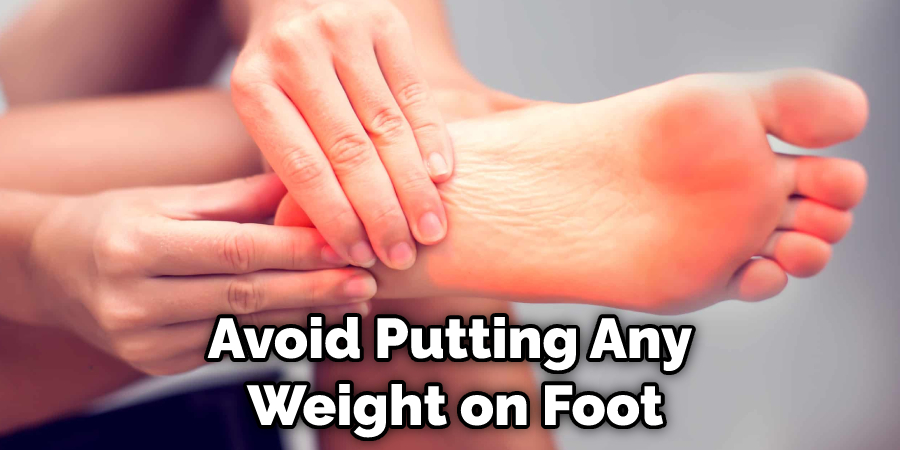
Conclusion
Although a calcaneus fracture is a serious injury, you can make a full recovery with the proper rehabilitation. If you have recently suffered this type of fracture, follow your doctor’s instructions closely and take your time in rehab. You will be back on your feet before you know it! Thanks for reading our post about life after a calcaneus fracture.
You May Also Read: Can Shoes Cause Knee Pain

